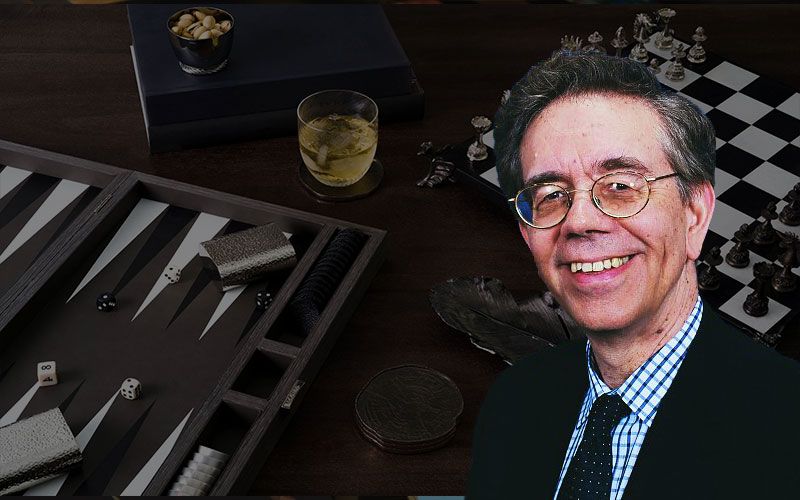
Loading board
In this position White got stuck playing an ace-point game which didn’t go well for him. Now he’s lost his 6-point, and next turn he’ll either have to break his board or run off his anchor.
Meanwhile, Black is doing reasonably well. He’s cleared his 6-point and managed to bear off two checkers. The weakness in his position is the stripped 3-point, which might cause problems once the 5-point is cleared.
I call these positions “Bearoffs against Contact”, and they can be very tricky little problems. Black’s top goal is usually safety: he wants to bear off while leaving the minimum chance of getting hit. His second goal is winning a gammon. His gammon chances are generally small, but not insignificant.
Usually one play will be significantly safer than any other, in which case that play will dominate. If two plays will offer roughly the same winning chances, but one gives better prospects for a gammon, that play will make it to the top of the list.
Here Black has three plays worthy of consideration: (a) 5/2 5/4, (b) 4/off, and (c) 3/off 3/2. Let’s see how the plays compare for safety and gammon-winning chances, and see if a clear favorite stands out. (a) 5/2 5/4. Clearing the rear point is usually the safest play, but not always. Here the stripped 3-point comes into play. After 5/2 5/4, Black is odd-ended and his threes will often leave a shot, making this play much less safe than usual. Here he leaves a blot next turn with 66, 55, 44, 63, 53, 43, and 32, a total of 11 numbers. In addition, playing 5/2 5/4 leaves Black with some horrendous positions on the following turn. After rolling 65, 64, or 54 he’s left with three checkers on the 4-point and two in the 3-point, a formation which yields 23 blot numbers.
(b) 4/off. Keeping the 5-point and bearing off a checker instead helps win more gammons in two ways: Black gets an extra checker off, which always increases his gammon chances by a few percent, and Black maintains his prime another turn, which may prevent White from releasing a back checker. Here the play has a third effect: if White rolls 44, 43, 42, or 41, he not only can’t release a checker but has to break his board instead, giving Black some extra winning chances as well as extra gammon chances.
If we count Black’s shot-leaving numbers after 4/off, we get only 10: 66, 55, 64, 54, 43, and 41. Surprisingly, 4/off is actually a little safer than clearing the back point, at least on the first turn. (c) 3/off 3/2. On rare occasions, breaking an inner point can be the best option. Most of these situations occur when Black has a full inner board (2-point through 6-point) and has a chance to clear the 5-point before clearing the 6-point, with a resulting better distribution. When there are two points to be cleared above the gap, as here, the play is extremely rare and hinges on an otherwise weird and awkward distribution. That’s not the case in this position and clearing the 3-point is the worst of the three choices.
Just listing the virtues and defects of plays (a) and (b) makes it pretty clear that 4/off must be best. Taking a checker off is both better for the gammon, safer on the next roll, and more likely to keep White trapped and make him break his board some more. A rollout confirms that 4/off is the best of all possible worlds: it both wins more games than clearing the 5-point (94.2% to 93.1%) and wins a lot more gammons (16.7% to 10.7%).